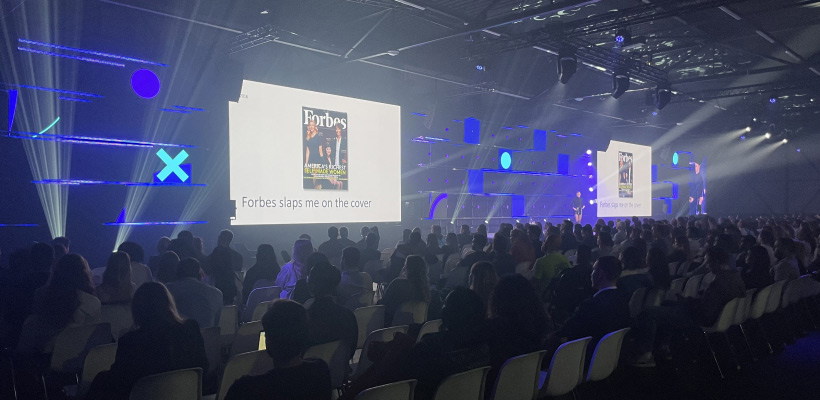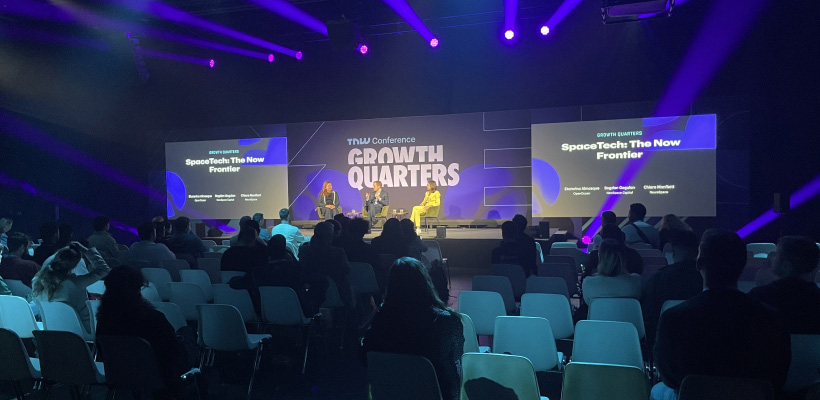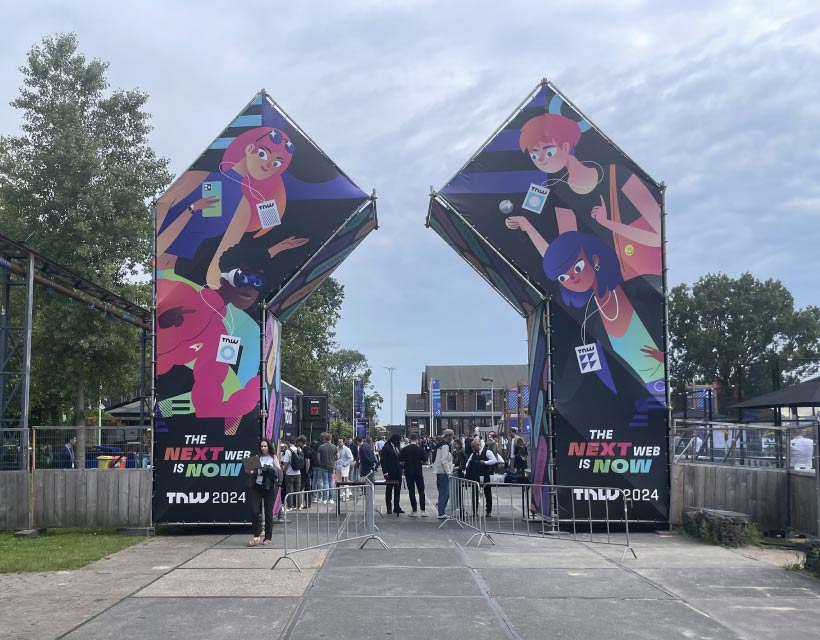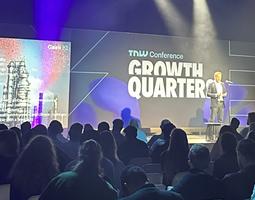The TNW conference, which took place in Amsterdam on June 20-21, was the last stop in Light IT Global’s IT events journey. And we couldn’t dream of a better finale! Over 9600 attendees from 82 countries, 250+ speakers, and dozens of panels on the most relevant IT topics. Two days at TNW were jam-packed with thrills, experiences, and, certainly, insights we’re ready to share with all of you.
So, let’s dive into the “field report” from our VP of Digital transformation Anastasiia Bredun, and VP of Sales and IT Services Denis Kovalenko!
Edge Computing and Deep Tech as the New Norm
In summary, the edge computing concept describes a distributed architecture that, unlike the cloud, ensures data processing as close to the client’s device as possible. Its main benefits include low latency, real-time responsiveness, less resource consumption, and reduced network congestion.
However, despite its many advantages, edge computing mass adoption requires severe remodeling of the cloud ecosystem and segments of internet infrastructure, which has its challenges and will require time.

Still, Join Young Sohn, Chairman of Semiconductor Advisory Board at Samsung Electronics, and Lars Reger, Executive Vice President and Chief Technology Officer at NXP Semiconductors believe that edge computing will become the new norm in the next 10 years, just like cloud computing is now.
According to Lars Reger, in 10 years we will have 70 billion connected devices globally, which will require three times the energy of this planet if we would use them on today's technology. In other words, soon enough the tech community will be forced to find a way to have smarter power and ensure new sustainable infrastructure.
The biggest issue with modern infrastructure, in Join Young Sohn’s opinion, is its obsolescence. As today we are using the 30-year-old architecture that came out of the server architecture, it can’t keep up with a new AI space, it’s not very power efficient, it moves a lot of inefficient data, is very power hungry, and very expensive. This is where Deep Tech and edge computing will come into play to reduce power consumption and mitigate the infrastructural, environmental, and security challenges posed by tech and AI expansion.
At the same time, both speakers emphasized the importance of understanding the pace in which technology is evolving and being adopted. They mentioned we should be mindful of the excessive optimism at the early stages of new IT trends emergence and the excessive pessimism we have regarding the same trends in the long run. So, summarising the talk, both Deep Tech and edge computing will be extremely important for technology development in the next 10 years, but we shouldn’t anticipate quick results in the next two or even four years.
LLMs Reshaping AI in FinTech
While AI adoption and usage isn’t exactly something new (mind that large enterprises have been using this technology for 10+ years), there’s always something exciting and fresh happening in the IT realm. And, in Tom Blomfield’s opinion, the latest AI-related big thing is the introduction of large language models.
The Monzo Co-Founder and Group Partner at YC Tom Blomfield believes that the LLMs’ ability to work with textually ambiguous data has the potential to really broaden out a lot of the use cases for AI in financial services.

In the next five years, LLMs, in addition to well-known AI capabilities like fraud detection/prevention, AML transaction monitoring, and credit underwriting, have the potential to significantly reduce the expenses associated with customer service, quality assurance, and compliance.
We should, most likely, expect the mass elimination of jobs associated with these kinds of services as large language models will be capable of fully automating the process and delivering high-quality results without having to engage human resources.
At the same time, quick mass LLMs adoption is not on the table at the moment, as the big banks, being more risk-averse, will most definitely not pick up on this technology trend right away.
Having to deal with strict regulatory policies is another challenge Financial market players have to face when integrating LLMs as there are still a few tech issues that have to be resolved e.g. hallucinations. However the implementation of multi-layer AI will allow to achieve the necessary level of predictability and security for LLM-powered systems. And as the cost of large language models goes lower every year, their ability to replace the human workforce will become even more obvious.
AI-related Privacy, Safety, and Bias Concerns are the Hot Topics
The matter of AI incorporation into business processes and our daily lives has been discussed at TNW from multiple points of view. If it efficient? Is it life-changing? And, certainly, is it ethical?
Multiple speakers at the conference highlighted the issue of shallow AI usage not only by individuals but by market players as well. Just to give you an example, theoretical neuroscientist Dr. Vivienne Ming raised a question asking how often AI is used to detect an early stage of cancer and save someone’s life as a counterbalance to how often AI is being used to generate useless images. The focus on humanity and bringing actual meaningful change to the world is slowly drifting away replaced by mindless entertainment or no-purpose activities in general.

Many business owners today still cannot stop using AI just for the sake of using it. The lack of a clear business value added by Artificial Intelligence typically leads to business initiatives' failure and financial losses.
Yet, the “shallow approach” to AI adoption in modern businesses isn’t the only drawback we face as a society. Both tech and business communities have to unite efforts to minimize bias perpetuated by AI and confront the very real possibility of cognitive decline driven by extreme reliance on technology.
Possibly the next logical step for AI advancement is building Artificial Intelligence that can reflect and make moral judgments aligned with human values as even today the moral compass of modern AI creators is fully reflected in the systems they create.
Wrapping It Up
Attending TNW 2024 was an exhilarating experience for Light IT Global. The conference offered deep dives into the most cutting-edge advancements in AI, edge computing, deep tech, large language models, quantum computing, and other tech trends that will shape the IT industry. It provided a unique platform to explore transformative technologies, connect with industry leaders, and gain fresh perspectives on the future of IT.
The insights and connections made at TNW 2024 have equipped Light IT Global with valuable knowledge and inspiration to drive our projects forward. We are excited to implement these learnings and continue to innovate. The conference reaffirmed our commitment to leveraging cutting-edge technologies to deliver exceptional custom solutions for our clients and partners.
And while this trip completed our June event journey, be sure to stay tuned and learn about the next tech events we will visit this year!



